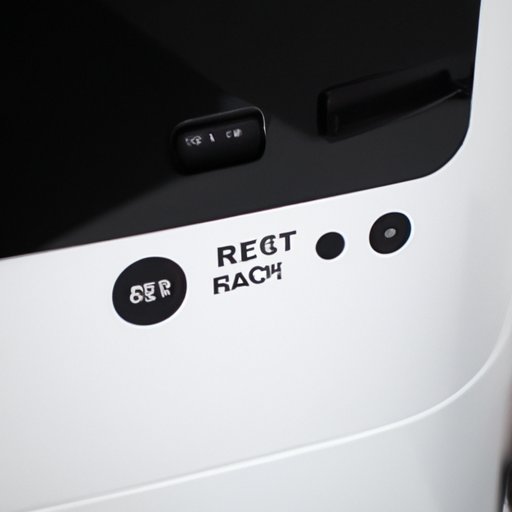
I. Introduction
Imagine your iMac is starting to run slow, and you can’t seem to shake off the problem. The solution might be resetting it to the factory settings. But what exactly does that mean? In this article, we’ll guide you through the process of resetting your iMac to factory settings, including steps to prepare and troubleshoot common issues.
II. Understanding the iMac Reset Process
Before we jump into the reset process, let’s clarify some terms for better understanding. Resetting and restoring are two different processes. Resetting will erase everything on your iMac, while restoring means you’ll retain your files, apps, and settings while resetting a Mac to its original state.
The pros of resetting your iMac to factory settings include clearing up space on your hard drive, speeding up the computer, and getting rid of any software issues. On the other hand, resetting will erase all files and configs stored on your iMac, so it’s essential to backup before you proceed.
III. Preparing Your iMac for a Reset
Now that you understand what resetting your iMac means, let’s go over the steps you need to take before we reset the Mac to the factory settings.
First and foremost, backup all your essential files to avoid data loss. Use Time Machine software to make it a seamless process. Connect an external drive, and then turn on Time Machine, follow the prompts, and wait for the backup to complete.
Next, disconnect all external devices, such as printers, hard drives, and USB hubs, and remove any accessories like headphones or keyboards. This ensures your iMac is in the ideal state for resetting.
IV. Steps to Resetting Your iMac to Factory Settings
Here is a step by step guide to resetting your iMac to its original factory settings:
- Click on the Apple menu on the top left side of your screen and select “Restart.”
- As the iMac restarts, press and hold down the “Command + R” keys until the Apple logo appears. This takes you to the recovery mode.
- In the “Utilities” window that pops up, select “Disk Utility” and click “Continue.”
- Select your startup disk and click on the “Erase” button. This action permanently erases all data on your iMac.
- Quit the Disk Utility app and select “Reinstall MacOS” from the “Utilities” menu.
- Follow the prompts to complete the setup process, and your iMac will be back to its clean factory state.
If you can’t access recovery mode, contact Apple support for further assistance.
V. Erasing Your Personal Data Before Resetting Your iMac
If you’re selling or donating your iMac to someone else, you should consider erasing your data before resetting it to the factory settings. It prevents unauthorized access to your sensitive information. macOS has an inbuilt security feature that erases disk data to avoid recovery, but you can still use third-party software to ensure the process is thorough.
There are various data eraser tools that you can use, such as CCleaner, CleanMyMacX, or Drive Genius. These tools help overwrite your data, making it unrecoverable. Follow the instructions provided by each software to erase your data.
VI. Tips and Tricks for Resetting Your iMac
It’s important to know that resetting your iMac to factory settings removes all your files, apps, and files that come with third-party apps. However, you can reset your iMac without losing your important files by simply transferring them to external storage or iCloud.
After resetting your iMac, it’s also vital to optimize its performance. Clear unwanted apps, clear caches, and free up storage to keep your iMac running smoothly. Follow this guide on how to speed up your iMac’s performance.
VII. Troubleshooting Common Problems
Resetting your iMac may come with some bumps, so here are some common problems and their solutions:
- If the reset process stalls, try starting again and ensure that you’re using the correct keys to access recovery mode.
- If you see error messages during the process, check your internet connection or contact Apple Support.
- If you can’t install the latest OS after the reset, check that your iMac is compatible with the operating system. If it’s not, install the previous version of macOS.
VIII. Conclusion
Congratulations! You now know how to reset your iMac to its factory settings. We’ve gone through the steps you should take before, during, and after resetting to optimize your experience. Remember to backup your files, erase your data before selling or giving it away, and troubleshoot common problems that may arise. Your iMac will be running like new, and you’ll have learned a valuable skill.
For more information, visit the Apple Support website.




